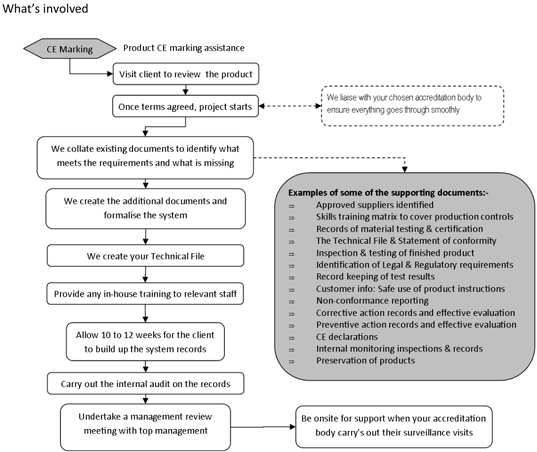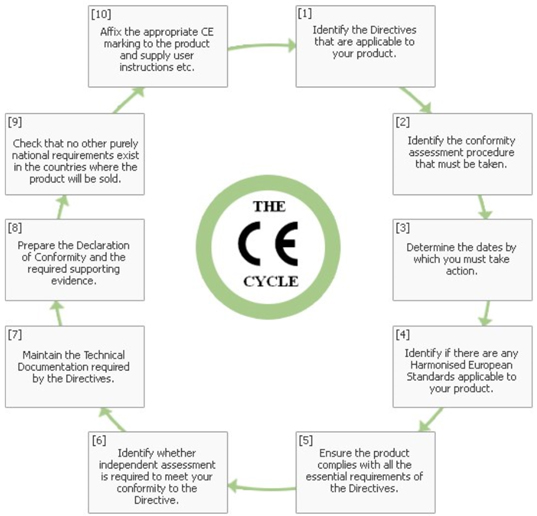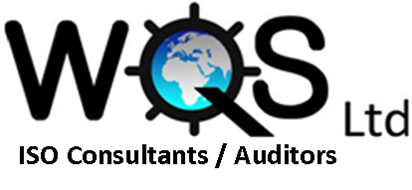Certification product marking consultant
It is a criminal offence to supply products in Europe that do not satisfy the Construction Products Regulations. For fittings intended for use on fire/smoke and escape doors CE marking is the easiest method to demonstrate compliance. The building control officer or other approved inspector will require proof of this compliance.
CE Marking – What’s In It For You
The EU introduced the CE Marking scheme to make trade easier and cheaper between EU countries. It means that a manufacturer claims that their product conforms to the minimum legal requirements for health and safety as laid down in EU directives.
The most obvious benefit is that the CE Marking on your product will gain you access to the European Economic Area (EEA).
If the European product directives apply to your products and you want to continue to export to the European market (or introduce new products), then CE Marking is mandatory and therefore crucial to your success.
There will be only one set of laws and regulations to comply with in designing and manufacturing your product for the entire European Union (EU) marketplace. The multiple and conflicting national restrictions on regulated products will be eliminated.
Additional benefits may include your product being made safer for end-users and consumers as well as reduced damage claims and liability premiums.
Often customers will look for CE Marking on a product as an indication of conformance to laid down minimum standards, and therefore a minimum level of quality that other products may lack.
What is CE Marking?
The European Commission refers to the CE Marking of products as a “passport” which can allow a manufacturer to freely circulate their products within the European marketplace.
The marking applies only to products regulated by the European Commissions health, safety and environmental protection legislation (product directives) but this is estimated to include more than 50% of the goods currently exported from the U.S. to Europe. All other consumer products are subject to the requirements of the General Product Safety Directive 92/59/EC, which does not require the CE-mark.
The actual CE Marking is the letters “CE” which a manufacturer affixes to certain products for access to the European market (consisting of 18 countries and also referred to as the European Economic Area or EEA). The letters “CE’ are an abbreviation of a French phrase “Conformite Europeene”. The marking indicates that the manufacturer has conformed with all the obligations required by the legislation. Initially, the phrase was “CE Mark”: however, “CE Marking” was legislated as its replacement in 1993.
Does Your Product Require CE Marking?
CE Marking is required if your customers are in located in certain countries and if they purchase certain types of products from you.
Are your current or future customers in the following countries?
European Union (EU) member states:-
|
|
|
European Free Trade Association (EFTA) members
- Iceland
- Liechtenstein
- Norway
Do you now, or will you in the future, ship to these customers the following types of products?
| Toys Pressure Vessels Medical Devices Personal Protective Equipment Telecommunications Pressure Equipment Non-automatic weighing instruments Equipment and Protective systems for explosive atmospheres Measuring Instruments In-Vitro Diagnostic Medical Devices Electrical products |
Construction Products Satellite Station Equipment Machinery Lift Machinery Gas Appliances Appliances (other than gas) Recreational Craft Marine Equipment |
If so you will need to have your product CE marked
Depending on the product and the Directive requirements, this can be a self certified product or will require independent testing by an approved body to obtain product certification.
The CE Marking is NOT required for the following products:
- Chemicals
- Pharmaceuticals
- Cosmetics
- Foodstuffs
Products that are not covered by the European CE Marking Directives may fall within the scope of other European or national legislation. If there is no specific legislation, the General Product Safety Directive (2001/95/EC) applies. This European Directives requires that products are safe, but is does not require any marking.
The CE marking process
Step 1:
Identify the Directives that are applicable to your product. You can download these directives free of charge from the European Union website
Step 2:
Identify the conformity assessment procedure that must be taken. This could be self-declaration, involve testing, inspection or quality system assessment from a Notified Body or a combination of these. The conformity assessment procedure will differ depending on your product and the Directive in respect of which you will be CE marking. If you are unsure about which procedure to take, please Contact Us for advice.
Step 3:
Determine the dates by which you must take action. This will be the date that the Directive comes into force. The majority of directives are already in force. In these cases, it is an offence to place a product on the market without CE marking because it indicates a presumption of conformity with all relevant Legislation.
Step 4:
Identify if there are any Harmonised European Standards applicable to your product. These are not always mandatory for manufacturers although there is a presumption that conformity to these standards will give conformity with the relevant part of the Directive. Whenever possible or appropriate, manufacturers should follow harmonised standards.
Step 5:
Ensure the product complies with all the essential requirements of the Directives. Take appropriate measures to comply or identify existing data and test reports.
Step 6:
Identify whether independent assessment of your conformity to the Directive, or some aspects of it, is required from a Notified Body. This will be stated in the directive and is dependent upon the product you are CE marking. You must not affix CE marking to your product until all necessary certifications have been obtained from the Notified Body.
Step 7:
Maintain Technical Documentation required by the Directives. Your technical documentation should support your compliance with the requirements of the Directive. It is essential to retain this documentation.
Step 8:
Prepare the Declaration of Conformity and the required supporting evidence. The Declaration of Conformity along with the Technical Documentation should be available to Competent Authorities (EU Members) upon request.
Step 9:
Check that no other purely national requirements exist in the countries where the product will be sold. These may include national standards, labelling or packaging requirements.
Step 10:
Affix CE marking to product and supply user operating instructions etc.
Finally, ensure any changes to the product does not compromise your certification and regularly review for amended or new Directives that could affect your product.


How to construct the CE mark

The CE Marking must be affixed to the product, to its data plate or, where this is not possible or not warranted due to the nature of the product, to its packaging, if any, and to the accompanying documents by the manufacturer, the authorized representative in the European Community or, in exceptional cases, by those responsible for placing the product on the market.
The CE marking must be affixed visibly, legibly and indelibly. Where special provisions do not impose specific dimensions, it must have a height of at least 5 millimetres.
